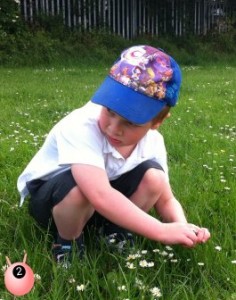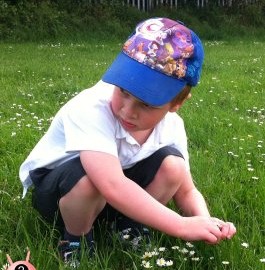Visual
We receive lots of information through all our senses. There are 7 senses which we use and filter out which bits of information we need to make sense of things, and to tell us how to behave. Sometimes we all can struggle with this – such as someone tapping a pen whilst we listen to someone else. But people with sensory integration disorder (or sensory processing disorder) have trouble registering and organising the information, making it difficult for them to learn and function in the World.
There are times when the child is over aroused and needs calming down, or maybe the child is too calm and needs arousing, and it is also normal to switch between the two. This post looks at the sense of Vision.
These are things to bare in mind whilst at school, they can be helped by simply moving the child. Say away from a lot of light streaming in through the windows, or away from the dark story corner – or the opposite – dependent on whether they are seeking or avoiding. It may be the reason why they are screaming that they do not wish to go outside at play time (simply because it is too bright). Or why they have trouble getting to sleep at night, or wake early (light coming into their room).

TOO MUCH
- Poor eye contact
- Enjoy the dark
- Turn off light switches
- Object to going outside on a bright sunny day
- Lots of squinting outside in the sun
- Hide away from bright light
- Can’t find their shoes in a large pile
- Comment more than others on changes in lighting (e.g. cloud covering the sun)
- Frequently rub, squint or cover their eyes
What we can do to help
- Have a ‘time out’ area/ tent (keep it dark)
- Sit them away from fluorescent lights, bright posters/ wall hangings, bright windows (Soft, consistent lighting/Minimal bright lights and visually distracting objects/ Natural lighting).
- Sparsely decorated rooms
- Pastel colours
- Ask them to collect their shoes/ bag last
- They might not be able to follow instructions on posters/ not respond as well to gestures
- Allow them to wear hat or sunglasses outside.
- Give them an eye mask to help sleep at night.
- Blackout blinds or curtains.
NOT ENOUGH
- Hand flapping/ waving fingers close to their face
- Like watching spinning, shining objects
- Repeatedly spin bright, reflecting objects
- Love to flick lights on & off
- Watch repetitive movements e.g. flipping pages of a book, opening/ closing doors & cupboards
- Manipulate objects close to their face
- Might bump into people or things (too distracted looking at other things)
- Lose their place while reading
What we can do to help
- Sit them under bright lights/ next to window
- Variations in colour
- Fluorescent lighting
- Artificial lighting
- Bright colours
- Cluttered rooms
- Use visual supports e.g. bright posters, visual schedules
- Allow them to play with visual toys & games
- Use high colour contrast e.g. dark food in white bowl; hang dark hat on light coloured wall
This is not a sponsored post.
Many thanks to the Children’s Occupational Therapy Gloucestershire Care Services NHS Trust for supply this information and granting me permission to use it.
